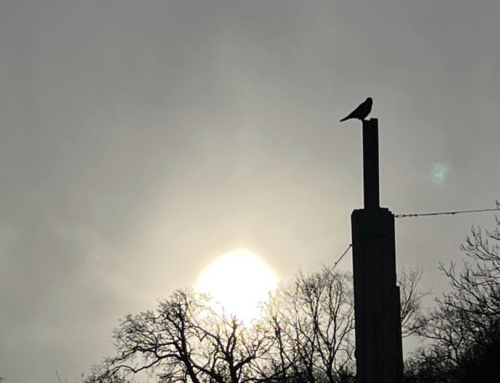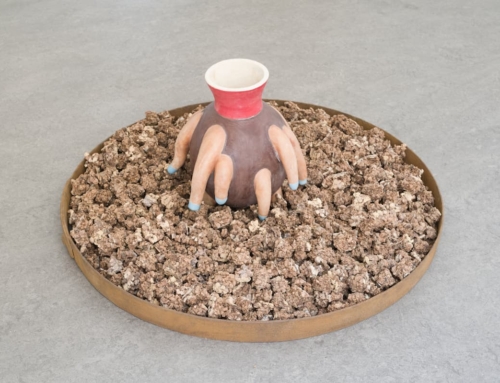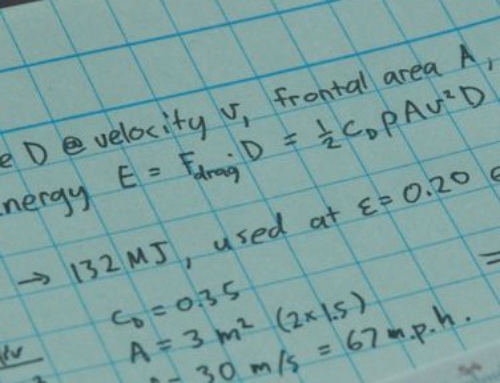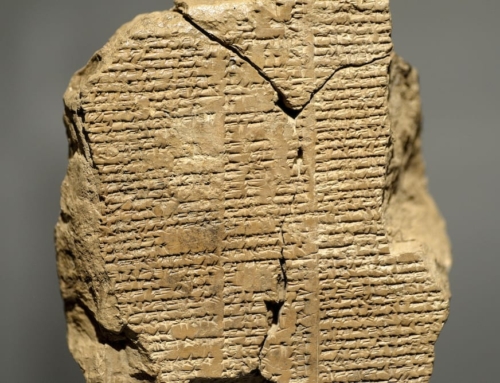A major new university in Finland is named after the Finnish architect and designer Alvar Aalto. Aalto University which opened in 2010, is the result of a merger between the Helsinki School of Economics; the University of Art and Design; and Helsinki University of Technology In 2009, I was invited to speak at symposium in Helsinki called “Beyond Tomorrow” about what the new university should do, and be.
The University has stated that it will will “make a positive contribution to Finnish society, technology, economy, art, art and design, and support the welfare of both humans and the environment”.
I propose that Aalto University should stand for something more precise than this: an unconditional respect for life, and for the conditions that support life.
Such a commitment would be stronger than the hippocratic oath sworn by doctors. Young doctors promise to “prescribe regimens for the good of my patients according to my ability and my judgment – and never do harm to anyone.” Unambiguous respect for human life here – but no mention of the rest of life!
An unconditional respect for life would also be clearer than the proposed scientific oath that has been circulating since 1995. In this text, scientists would commit to “minimise and justify any adverse effect our work may have on people, animals and the natural environment”. The natural environment is mentioned, which is a step forward – but the proposed commitment here is to minimise adverse effects, not stop them altogether.
Aalto University, in contrast to these ambiguous earlier attempts, could now acknowledge the biosphere as a systemic whole in which human beings are a co-dependent part.
An ethical position along these lines was first first championed by the American forester and ecologist Aldo Leopold, in 1949. Leopold proposed what he called a “land ethic” that would guide “man’s relation to land and to the animals and plants which grow upon it”. http://gadfly.igc.org/papers/leopold.htm
“A thing is right when it tends to preserve the integrity, stability, and beauty of the biotic community” wrote Leopold. “It is wrong, when it tends otherwise”. [“Biotic community” here is another name for what we now call the biosphere]
Leopold argued that harm was frequently done to natural systems because of our culture’s belief in its separateness from, and dominion over, nature. This myth of apartness dulls the sense of responsibility that would follow if we felt ourselves to be co-dependent members of natural community, he wrote.
This sense of apartness is not universal. Hundreds of millions of our fellow humans in other cultures worship nature now. We tend to call them “pagans” or “undeveloped” – but nearly all of them, unlike us, live sustainably.
There are a lot of tress one could hug in Finland, but an ethic based on an unconditional respect for life, and for the conditions that support life, does not mean the abandonment of science or engineering.
On the contrary: it’s because of what science has taught us about the biosphere, and about the complexity and precariousness of nature — things that we did not know at the start of the modern age — that the time has come to re-define the ethical basis of the academy.
Measured against this clear principle – respect for life, and for the conditions that support life – many of the things that Aalto University could do, that until now have been taken for granted, become a “maybe”:
Innovation is a maybe. Innovation is a right thing to do when it is informed by a commitment to preserve the integrity of the biosphere. When that commitment is absent, innovation can have profoundly negative consequences. The carbon economy is the result of innovation. The financial crisis is the consequence of innovation. Need I say more?
Fostering creativity is a maybe. Last year, a new product was launched somewhere in the world every three minutes. Most of these products involved the inefficient use of energy, water, and natural resources. Each product thereby contributed to the 70 million tonnes of C02 that is emitted into the earth’s atmosphere every 24 hours as a result of human activity.
Most of these products, and the emissions that accompanied them, involved input from creative professionals. Creatives dreamed up concepts, designed artefacts, and deployed a glittering array of communications, packaging, and retail settings. $400 billion was spent on advertising and marketing alone – a global flowering of narratives, images, symbols, and forms that had, as their outcome, unsustainable consumption.
I’ve read that Aalto University stands for a student-centered culture, too. Well, maybe! For me, a student-centered culture is no better than a professor-centered culture, or a technology-centered culture, unless this culture is suffused by an unconditional respect for the biosphere.
Multi-disciplinarity, too, is a maybe. Being active in international networks is a maybe. It is not a virtue to work across disciplines, or across national boundaries, unless the purpose, the ends of that collaboration, are predicated on…unconditional respect for the biosphere.
Collaboration with industry? That’s another maybe, too. Nokia is of course an amazing success story. But this story has its dark side. Although a mobile phone may weigh 100 grams or less in your hand, the total environmental footprint of a mobile phone adds up to 75 kilos, per phone, per year. [That number is calculated by adding up the resources needed to mine the heavy metals used in electronics, manufacture the handset, fabricate its computer chip and battery, build masts, run servers, manufacture the packaging, fit out and operate shops, and so on].
Nokia, on its own, sells a million of these small but not so innocuous artefacts every day, day after day. A million a day x 75 kilos per unit per year? Do the maths!
Universal mobile connectivity will be a necessary infrastructure in a sustainable economy – but it has to become a zero waste and zero emissions infrastructure. How, I don’t know – but that has to be the target.
Industrial artefacts don’t have to be technological, to have a big footprint. Paper, for example, is just as important to Finland’s economy as the mobile phone. But the manufacture of a single sheet of A4 paper, as used in my laserpinter, requires ten litres of water. Not for the packet, for one single sheet.
In a country like Finland, with its 188,000 lakes and 265,000 square kilometres (100,000 square miles) of trees, the footprint of paper is not an obvious priority….but globally, these ratios are critical.
Innovation, technology, economics, design. These activities tend to be celebrated as ends in themselves – but they are not, of themselves, virtuous. They are means to an end. If that end incudes unconditional respect for life then – but only then – these activities are worthwhile.
You may argue that this is to state the obvious: That of course Aalto University will respect life, and the conditions that support life.
But I stress the word unconditional. If a commitment is unconditional, it does not mean “take account of”; or “pay due respect to”; or “move steadily towards”. It does not mean “minimise adverse effects on nature”, as it says in that proposed scientific oath – it means a target of no adverse effects.
Unconditional does not mean generating “less waste than any of our competitors” – it means a commitment to zero waste, and zero emissions.
Neither does an unconditional commitment to the biosphere mean adding environment courses to a curriculum that otherwise remains untouched.
Philosophers at Aalto University may argue that there is no logical reason to make this clear ethical commitment. Well, there’s no logical reason why doctors swear the Hippocratic Oath – but they do so, anyway, because it is the right thing to do.
Others among you may worry that the watertight commitment, that I propose, would constrain academic and research freedoms. But the only freedom constrained by this commitment is the freedom to damage the basis of life – and for me, that’s a freedom we have to live without.
Let me be blunt: If you are not for the biosphere, you are against it. Sitting on the fence is no longer an option. The belief that we exist outside the biosphere – a belief which as shaped our universities since the enlightenment – has had, as its objective result, putting the biosphere in peril.
Ethics apart, I’m certain that climbing off the post-Enlightenment fence will give Aalto University incredible competitive advantage. People all over the world are looking for leadership, for an institution to take a stand. People, energy and resources will flock to the first institution that makes this commitment.
RESILIENCE
An ethical commitment to the biosphere suggests a challenging new focus for Aalto University’s programmes of work. That focus is the notion of resilience.
Resilience is a notion shared by the worlds of ecology, science and engineering. Resilience is also a more evocative and energising word than “sustainability”, which is such an unexciting destination.
Resilience is defined in The Transition Handbook as “the capacity of a system to absorb disturbance, and reorganize, while undergoing change”.
In the context of Aalto University, striving for resilience means the development of the understanding, tools and skills that will enable us to flourish in the absence of the profligate resource consumption we have become used to.
Developing these assets – understanding, tools and skills – will involve a huge amount research, practice, and critical reflection.
Does an unconditional commitment to the health of the biosphere mean that designers should stop designing products? that architects should not design buildings? that engineers should not exploit finite resources and energy to embody their creations?
My question is not a rhetorical one. The inputs and outputs of industrial society are so wildy out of balance, that questions are raised about all its buildings and infrastructures. Business-as-usual, with a new brand name, is surely not an option for Aalto University.
In this context, even if the main focus of their work stops being the design of shiny new buildings and products, there is much work for architects and designers to do.
The architect and engineer’s understanding of space, time, materiality, and process will be valuable as the focus of our innovation shifts to closed loop systems.
Designers and architects are also needed to create and optimise tools:tools for perceiving, seeing, understanding, conversing; tools for sharing and organising and exchanging; nd yes, tools for making things!
The carrying capacity of the biosphere is nor limitless, but neither is it zero!
The ability of the artist to help us perceive the unseen, or the invisible, will also be vital as we reframe our tasks and priorities.
We need to re-imagine the built world not as a landscape framed by certainties, and populated by frozen objects – but as a complex of interacting ecologies: energy, water, mobility, food.
But the stuff we will still make –products, services, infrastructures – will be designed according to principles that are based on respect for life and conditions that support life: low-carbon, resource-efficient, and zero waste.
We need to reconceive Aalto University as part of a complex of regenerative people and institutions that operate in ways that are sensitive to context, to relationships, and to consequences.





